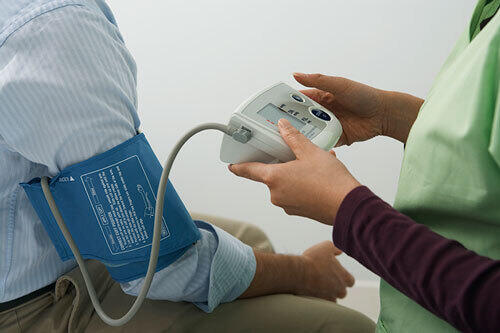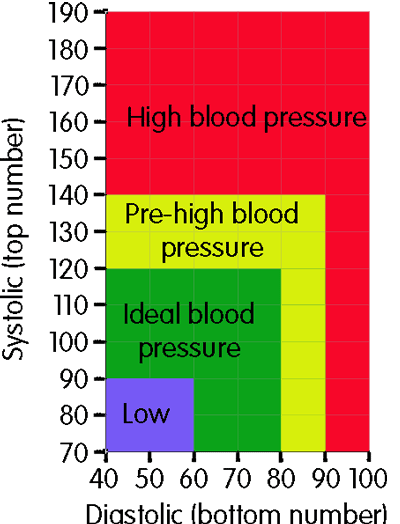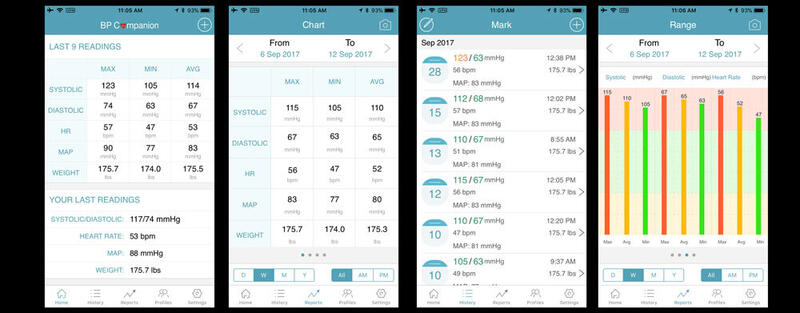
Blood pressure is one of our vital signs, and having either elevated or low blood pressure can be a important sign of health problems. Both high and low blood pressure are highly correlated with various diseases and elevated mortality and morbidity risk.
Fortunately, for self-trackers and health-conscious individuals, blood pressure (BP) is both extremely cheap and easy to measure. All you need is a simple device to record your BP non-non-invsasively and, if you want to check your results over time, a method to log these results.
Once you have it logged a few times, it’s easy to understand your blood pressure numbers, do some simple analysis, and, if your numbers are off, to start an intervention to get your blood pressure under control.
In this post, I want to share some observations on why and how to track your blood pressure as well as how to understand your blood pressure readings too.
Ultimately, my takeaway is that I personally don’t need to check my blood pressure everyday using a blood cuff. Hopefully one day our wearables will be able to capture our BP. But at the same time, blood pressure is an important metric and devices are affordable. This situation translates into periodic BP checks with a cuff each month or quarterly. This kind of habit can ensure nothing unusual happens in your underlying health and gives you a solid data point long-term too.
What is Blood Pressure?
Blood pressure is one of our vital signs like heart rate, oxygen saturation, body temperature and respiratory rate. Blood Pressure (BP) is the pressure of the blood that is circulating on the walls of our blood vessels.
Blood pressure is expressed in terms of two numbers: systolic pressure and diastolic pressure. Systolic pressure stands for the maximum pressure during a single heart beat, and diastolic pressure stands for the minimum in between two heart beats. Both are expressed and measured in terms of millimeters of mercury (mmHg), above the surrounding atmospheric pressure (considered to be zero for convenience).
During a heart beat, there is an up and down fluctuation of your blood pressure, which can visualized as a curve like the image here.

The bottom of the curve is your diastolic pressure and the top is your systolic. Interestingly the closing of the aortic valve of the heart between the left ventricle and the aorta causes the notch in the curve.
Normal resting blood pressure for adults is 120 millimetres of mercury (16 kPa) systolic over 80 millimetres of mercury (11 kPa) diastolic. It is often abbreviated as “120/80 mmHg”.
Both consistently low and high blood pressure are cause for concern. Blood pressure that is low is called hypotension, and pressure that is consistently high is hypertension. There are many causes of both hypertension and hypotension. The change could be sudden or developing over a long duration. In both cases, you should take it seriously.
How is Blood Pressure Measured?

Blood pressure can be measured intravenously, but generally it is now measured non-invasively using a cuff. Traditionally, blood pressure was measured using a mercury manometer and this is still method generally considered a standard way. Due to concerns about mercury toxicity, alternative methods have become more common.
Nowadays most blood pressure is taken using a sphygmomanometer, which is a device used to measure arterial pressure. It consists of a blood pressure gauge and a device used to measure blood pressure which often includes an inflatable cuff to tighten and then release the pressure on the artery in a controlled manner. The cuff is inflated to put and release pressure on an artery while measurements are taken.
Understanding Blood Pressure Readings and Ranges
![]()
Source: https://en.wikipedia.org/wiki/File:Blutdruck.jpg
When a doctor or an at-home BP device measures your blood pressure, the result you get is expressed with two numbers. The top one is your systolic, and the bottom one is diastolic. It is written like a fraction with a normal range of 120/80. Numbers outside the ideal range indicate an issue. If it’s greater, for example, it means your heart is working too hard to pump your blood.
- Prehypertension: BP numbers higher than 120/80 mm Hg are a signal of potential problems, and the recommendation is to start changing your habits and lifestyle to be more heart healthy or go on medication.
- Hypertension: Stage 1: You are often diagnosed with high blood pressure if your systolic blood pressure is between 140 and 159 mm Hg, or if your diastolic blood pressure is somewhere between 90 and 99 mm Hg.
- Hypertension: Stage 2: If the top number of blood pressure is above 160 or your bottom number is more than 100 or more, this is considered a more serious condition.
- Danger zone: Even if there are no other symptoms, a blood pressure reading above 180/110 mm Hg indicates a very serious health concern, and in most cases, someone with these readings will be hospitalized.
Here is a clear graphic on how to read your blood pressure results:

Source: http://www.bloodpressureuk.org/BloodPressureandyou/Thebasics/Bloodpressurechart
Blood Pressure-releated Diseases
Blood pressure has long been used as a way to indicate a problem state in the body. High and low pressure have been linked by research and doctors as warning signs for medical issues and diseases, especially over long periods of time. Long term hypertension is more common than long term hypotension.
For example, long term hypertension is a risk factor for many diseases, including heart disease, stroke and kidney failure. High blood pressure can cause issues with your brain, blood, retina of the eye, heart and kidneys. The most dramatic results of high blood pressure are strokes, heart attacks, heart failure and arterial aneurysms. Even moderate elevation of your blood pressure has been linked to decreased life expectancy.
Unfortunately, even though changes in your blood pressure can be a strong indicator of an issue, it isn’t frequently monitored or regularly. This can lead to the associated risks.
Which Blood Pressure Monitor Should You Get?
![]()
While you can get away with only a yearly blood pressure check, due to the potential for health ramifications if your numbers change dramatically, I’d argue that it’s worth the effort to check your BP more often at home. Blood pressure is extremely cheap and easy to measure. All you need is a blood pressure monitor.
At-home blood pressure monitors have been around for awhile and are considered both accurate and reliable. One of the most well-known brands is Omicron, which has been making blood pressure monitors for a few decades.
Like all things digital, there are a number of offerings when it comes to measuring your blood pressure. Recently, like all things, there has been a trend towards adding internet or bluetooth connectivity to these devices. This makes it easier to collect and store your measurements. Unfortunately, these connected devices typically cost quite a bit more.
Arguably, the most high tech blood pressure monitor available is from Nokia Health (formerly Withings), which connects directly to an app so readings are stored in the cloud. Personally I find not having the results available in a display somewhat disappointing. Check out this post for more reviews on the Best Blood Pressure Monitors.
Personally, I bought a simple, blood pressure monitor from Omron from about 30 or 40 usd. It’s a small box with a digital display that you connect to the cuff. It doesn’t connect to the internet or bluetooth. It’s powered by batteries and can also be plugged into the wall too.
I don’t think you need the most high tech blood pressure monitor. It simply needs to come from a reliable brand, be certified, and have a clear display for your basic readings. While digital storage of your results on the devices might be a good feature for some, I don’t think this is a must-have feature since I personally like log my readings in an app or online.
How Often Should You Measure Your Blood Pressure?
There are various recommendations about how often you should measure your blood pressure.
The general consensus and a wise approach for self-trackers is that your should initially track your BP about 5 or 6 times per day over about a period of one to two weeks. This will provide you with a good idea of your baseline number as well as give you some insight into what factors affect the rising or falling of your BP.
Blood pressure fluctuates both from minute to minute and changes throughout the day. BP normally follows patterns in relation to your circadian rhythm over a 24-hour period with your highest readings in the early morning and evenings and your lowest readings at night
Once you have a baseline on BP, most sources indicate that you likely only need to check your BP periodically. For someone with an at-risk BP, you should consider logging your numbers at least once or twice a day. Ideally check it once in the morning and again in the evening.
For an obsessively dedicated tracker, once a day is probably enough, and like measuring your Heart Rate Variability, you should aim to measure your blood pressure with the same conditions every day. For example, shortly after waking up, before breakfast or taking any medicine or a stimulant like coffee.
Personally, I found that my numbers were well within the recommended safe zones. I exercise regularly, eat a decent diet and am relatively low stress. So after a couple weeks of regular measurements, I stopped checking my BP everyday.
Like previous experiments in measuring my body temperature and my oxygen saturation, once I saw how consistent my numbers were, I found that logging the readings were no longer necessary. My BP readings turned into a periodic habit I schedule and check accordingly.
In view of how serious blood pressure changes can be and how easy it is to check with an at-home device, it’s wise to check your blood pressure. I plan to periodically track my Blood Pressure at least every month and ideally every two weeks.
Logging Your Blood Pressure Results: Apps, Spreadsheets and Apple Health
Tracking a data point involves taking a measurement and storing the result. While there are some seriously high-tech blood pressure monitors, I didn’t find the price worth a slight improvement with integration and logging. With a smart phone app or even just a spreadsheet, it is simple to log your results and collect your data.
A search for “blood pressure” on either Apple’s App Store of Google Play store for Android reveals dozens of apps. Most BP Apps provide the obvious features: recording your score, classifying it in a range and providing some aggregate statistics and charts. Additionally I wanted to my readings to be synced to Apple Health, which is Apple’s aggregation tool for all of your health data, and I also wanted a way to export my data for future analysis.
After trying a few options, I ended up using “BP Companion,” which provided all of the features I need. It’s highly functional and reliable app that does exactly what I need. The free version worked fine, and the premium one removed the ads and added an export option.

Since you are only logging three numbers (systolic, diastolic and heart rate), you can also use a form or spreadsheet app like Google Sheets or Airtable.
Blood Pressure Interventions and Preventative Measures
If you have an issue with your blood pressure, you should go to a doctor for a consultation.
Even if you have normal healthy number, it doesn’t hurt to take various preventive measure to keep your blood pressure in a normal range, since it will help you avoid hypertension and heart disease.
Some recommendations to prevent high blood pressure include:
- Limit or reduce your sodium intake
- Exercise more often
- Maintain a healthy weight
- Manage your stress
- Reduce your Caffeine intake
- Don’t eat too many processed foods
- Reduce or limit your alcohol drinking
- Don’t smoke
As we get older, especially once you are over 50, our systolic pressure tends to increase. So more awareness and prevention should be considered.
Conclusion: Tracking Your Blood Pressure and Why You Should Do It
Like heart rate, blood pressure is one of the signs that we are living, and it can be used to understand your health. Normal scores should be around 120/80. Both high and low blood pressure can indicate minor to quite serious health concerns. Fortunately, it’s extremely cheap and easy to log your blood pressure using an at-home device. While not as robust of indicator of your health and performance fluctuations as HRV, BP is a good data point to track and know for yourself.
A few months ago a friend of mine made a comment about my blood pressure and how it might be an issue in view of how much exercise I was getting. I shrugged the idea off at the time, but later I decided that my blood pressure was at least worth looking into. We get our blood pressure checked when we visit our doctor, but unless you already have an issue, we rarely check it on our own.
Fortunately, with a standard blood pressure monitor, you could easily track your BP and know your current numbers. In my case, I’m happy to report good numbers and nothing to be concerned about.
As a bit of a “tracking freak,” I briefly considered daily BP readings, but after a period of measuring over a couple weeks, it was clear that my numbers were good, and I had nothing to worry about. In view of how significant of a data point BP can be, I still think everyone should get their blood pressure monitored a few times a year and store a log of their results.
This has been another adventure in the quantified life!
Good luck and happy tracking!
